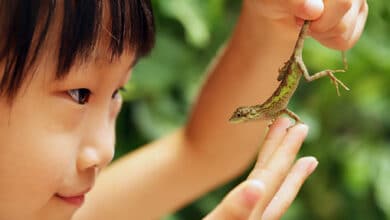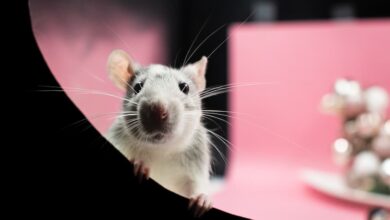Imagine yourself walking through a forest in the early morning mist. You are suddenly drawn upward by a rustling sound. There, on a branch, or crossing your path slowly, is an animal so colourful and extravagant that it almost seems mythical. The peacock is a bird that has captured the hearts of humans across continents with its beauty for thousands of years.
Peacocks are not just birds. They are symbols of beauty and royalty.
What is a Peacock exactly?
Let’s first get the terminology correct. “Peacock” is used to describe both male and female peacocks, but only the males. Females are called peahens, and they all together are called Peafowl. Peafowl, like other members in the pheasant clan, are ground-dwelling quail that prefer to rest in trees at night while foraging on land during daylight hours.
Peafowls are omnivores, and they don’t have a particular diet. In their natural habitat, they eat a mixture of insects, small animals, berries and seeds as well as various plants. They can adapt to many different ecosystems. From dense rainforests to farmland edges, they can do so with ease.

Peacock plumage: A tale of feathers and evolution
The peacock’s tail is one of its most recognisable and iconic features. It is technically called a Train. This train is not the bird’s actual tail. It’s a collection of elongated upper coverts that can reach 60% of its total body length.
The eye spots called Ocelli on the peacock train shimmer in iridescent shades of blue, gold, green and bronze. Each feather catches the light differently, giving the illusion that it changes colour or glows as the bird moves. The dazzling display of feathers is not just for the birds’ entertainment. It serves a specific purpose in nature.
The Dance of Desire
Peacock males are the best performers during the breeding season. The peacocks will spread their feathers into a grand arch, adding drama to the spectacle. This creates a hypnotic ripple across the feathers, which is designed to attract nearby peahens.
Females have remarkably refined tastes. The females evaluate the train based on factors such as symmetry, brightness, size and density of the eye spots. The most extravagant males are more likely than others to attract mates and pass their genes on. This is a clear example of sexual selection in action.
Peafowl Species Around the World
Peafowl are native to specific geographical regions. There are three main species:
1. Indian Peacock or Blue Peacock ( Pavo Cristatus )
The Indian Peacock, perhaps the most well-known species, is indigenous to the Indian Subcontinent, especially in India and Sri Lanka. The birds have been revered for millennia, appearing in myths, religious icons, and ancient artwork.
The Indian peacock male has a metallic blue body with brilliant greens, blues and feathers trailing. This species is hardy and adapts well to colder climates.
They are found in the wild in farmlands and open forests, where they form small groups. At night, they roost in large trees. The IUCN classifies blue peafowl as a species of least concern, a rarity today in a world of diminishing biodiversity.
2. Green Peacock Pavo mutticus
The green peacock is native to tropical forests in Java (Burma), Thailand, Laos and Vietnam. It’s just as majestic, but much less common, than its Indian cousin. This species, with a body covered in gleaming greens and bronzes, has a train that is similar but more detailed.
Green peafowl, on the other hand, are more aggressive, particularly in captivity. It is known that they are territorial and can be difficult to handle when kept with other birds.
Green peafowl, unlike their blue relatives, are less cold-tolerant. They require humid, warm environments to flourish. The IUCN has classified them as endangered due to the dramatic decline in their population caused by habitat degradation and illegal hunting. Only 10 to 20 adults are estimated to be left in the wild.

3. Congo Peacock Afropavo Congensis
The Congo Peacock is Africa’s only native peafowl. It is less well-known but equally fascinating. This elusive bird lives in the dense rainforests of the Democratic Republic of the Congo.
The male Congo peacock is smaller and has a more subdued colouration. Its body is deep blue with green accents and a short tail. The female Congo peacock has a more reddish-brown tone and a topknot. They are smaller than their Asian cousins, measuring around 65-70 cm (25 to 28 inches).
The Congo peacock was discovered in the 20th Century, but it remains a mystery for ornithologists. Unfortunately, the Congo peacock faces similar threats to the green peafowl. These include habitat destruction and hunting. It is listed by the IUCN as a sensitive species with less than 10,000 individuals remaining in the wild.
Breeding and Early Life
Peafowl tend to breed similarly, regardless of the species. During the mating season, dominant males try to gather harems consisting of several females. These selected peahens lay three to eight eggs, usually hidden in underbrush.
After approximately 28 days of incubation, chicks can walk and forage almost immediately. Amazingly, they can fly a short distance within a week after hatching. This is a vital trait for escaping predators on the ground.
Peafowl reach sexual maturity at around three years old. However, some male Indian peacocks are observed mating as young as two.
Peacocks and Human Culture
In many cultures, the peacock is a symbol of everything from divine beauty and immortality to pride and nobility. It is associated with Hindu gods and goddesses. In India, it is the country’s bird. Kartikeya, the Hindu god of wisdom and knowledge, is often shown riding a peacock. The feathers are considered sacred by Krishna and used in religious ceremonies.
In Persian literature and art, the peacock appears as a protector of royalty and is often used in palace decoration. Through trade and conquests, the peacock image spread westward, appearing in European Tapestries and Greek Myths. It even appeared in Christian Iconography.
Peafowl are now a symbol of luxury and exoticism, both in European estate gardens as well as Hollywood films.
Captivity Life
Peacocks can be seen walking gracefully in the grounds of temples, estates and zoos. Peacocks are ornamental birds par excellence. They’re admired for their beauty, but also their dramatic calls, and their curious, inquisitive behaviours.
Not all peafowls are easy to maintain. The green peafowl is known for being temperamental and aggressive. They require space and care. Blue peafowl have, however, adapted well to the domestic environment and can survive in colder climates.
Over the centuries, selective breeding has produced peafowls with uncommon plumage colours, including white and pied. black-shouldered is also a variant. Conservationists stress the importance of conserving the natural forms, particularly those that are threatened.

Peacocks are in Peril
Peafowl, despite their cultural and historical significance, are not immune to the threats that wildlife faces worldwide. The Indian peafowl thrives in wild and domestic environments, but its Congo and green cousins are fighting for their lives.
In parts of Southeast Asia, Africa, and the Middle East, illegal hunting continues for feathers, traditional medicine, or meat. The loss of native forest to agriculture, logging and urban development is reducing the space that these birds need to thrive.
Conservation efforts, including legal protection, captive breeding, and habitat restoration, are more important than ever. Each iridescent feather in a mating ritual is a testament to what nature can do when it has the time and space.
Final Thoughts
Peacocks are a testament to the creativity and resilience of nature. They can be seen in forests of India, jungles of Southeast Asia or rainforests of Central Africa. These birds are more than just beautiful. They are also essential to their ecosystems and are icons of culture around the world.
Take a moment and appreciate the evolution miracle you are witnessing. It depends, as do so many other miracles, on our efforts to preserve and protect it.




